Indie Monthly: September 2024
Approaching the end of another year of indie development

September was an extraordinary month for the Indies. It's been such a full month, in fact, that I didn't even get to half of the games I wanted to show off. Among the September titles worth a second look are the sixth-gen survival horror throwback Hollowbody, the ambitious monster slaying game Fera: The Sundered Tribes, the Atari franchise revival Yars Rising, and the nostalgic adventure game Beyond Shadowgate, any one of which could be worth your consideration.
But that doesn't mean that the games I did go hands-on with aren't just as impressive. It's an eclectic mix this month, starting with a pair of games that, for me at least, are definite GOTY list material.
If you're interested in seeing how the games look in action, check out video versions of these reviews here.
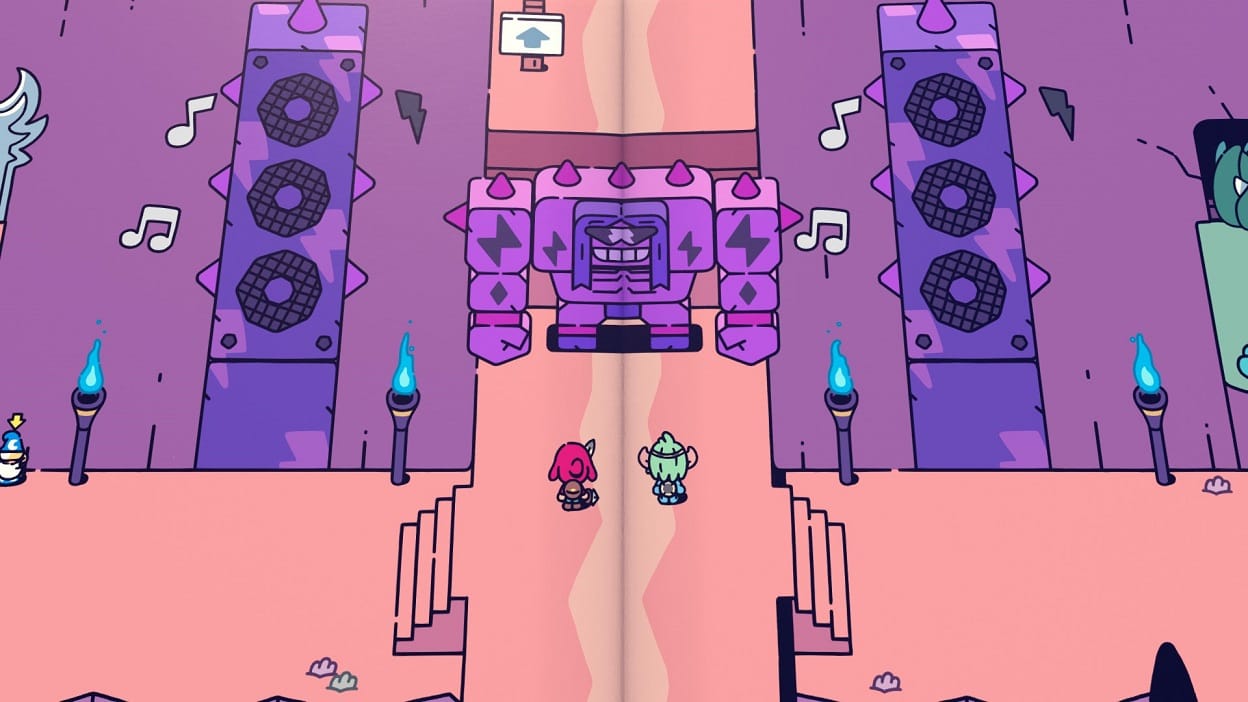
The Plucky Squire
Jot is a designated hero - the protagonist of a series of storybooks, destined to defeat the villain forever, to the delight of children. That all changes when Humgrump, the perpetual loser in those stories, discovers a spell that allows him to banish Jot from the storybook world and into a strange third-dimensional space. Fortunately, that spell had the side effect of granting Jot the ability to break the fourth wall, a gift he'll need as he weaves between worlds and tries to set the story right.
The Plucky Squire is an action-adventure game that is, mechanically, a love letter to video games past and present. The story effortlessly moves between different genres, turning into a platformer or puzzle game when needed and mixing in minigames that hearken back to classic titles. This is reflected in the game's striking aesthetics, with Jot switching between the vividly-colored 2D realm of the storybook and the high-detail 3D world that lies beyond.
For all the gameplay variety, The Plucky Squire is an adventure and puzzle game at heart. The core mechanic involves changing the words to the story so that it affects the surroundings. This task often requires Jot to exit the storybook to collect new tools to manipulate the story, such as by turning back the pages to retrieve items from earlier in the plot. It's a narratively interesting approach that also gives the player a lot of creative, intuitive ways to tackle the game.
But let's double back to the visuals because the art design in The Plucky Squire is absolute genius. While it's clear from screenshots and video that this is a game using recent techniques to generate extremely high-quality visuals, that may not put across the attention to detail or the skill with which the developers blended different styles. The game world takes place on a young boy's messy desk, and the sketches and bric-a-brac on said desk offer a lot of opportunities to explore aesthetic approaches that are both chaotic and coherent.
In sum, The Plucky Squire is the action-adventure game we've all been waiting for - new ideas with old-school sensibilities.
The Plucky Squire is available on PC via Steam, on PlayStation 5, Xbox, and Nintendo Switch.
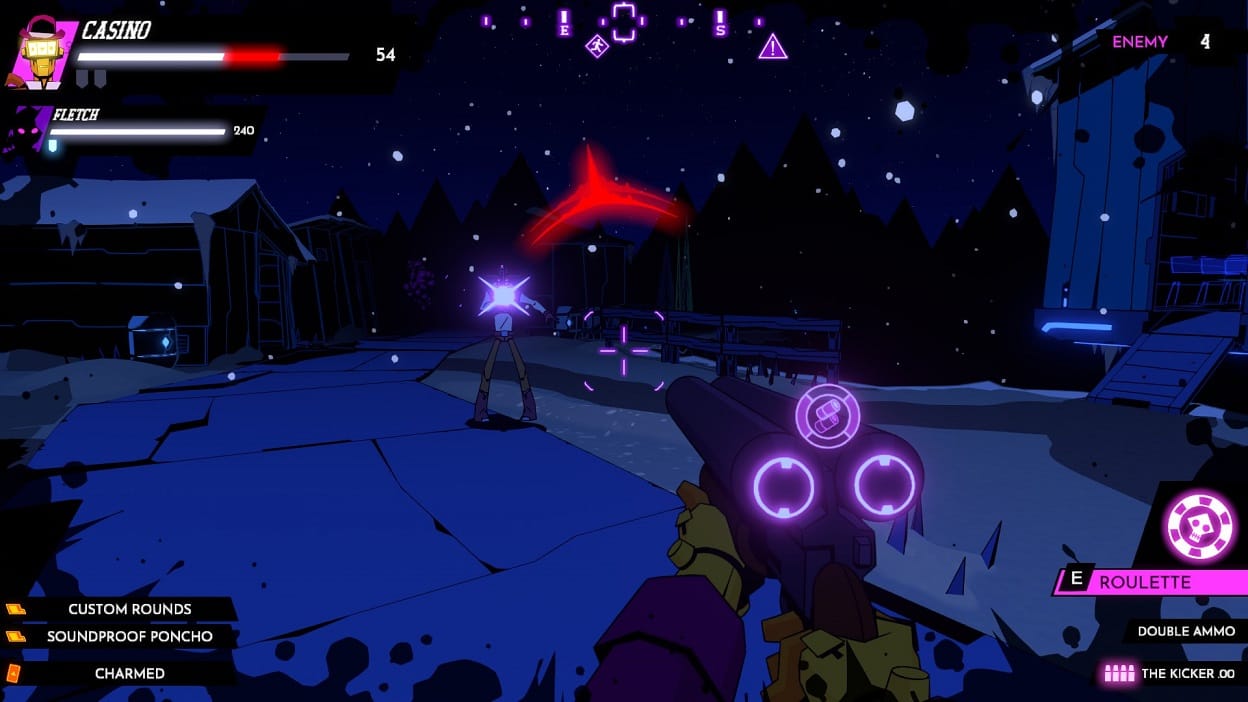
Wild Bastards
The Wild Bastards were once the most notorious gang in the galaxy - a collection of thirteen outcasts and freaks with talents for mayhem. That was before the arrival of the genocidal Jebediah Chaste and his sadistic offspring. Now, only two of the gang remain, snatched from the jaws of death by a mysterious autonomous ship known as the Drifter. This ship is going to take them to a legendary safe ground called the Homestead, but not before they find the other eleven outlaws and bring them back from the other side.
Wild Bastards is a first-person roguelike following in the vein of Blue Manchu's previous game Void Bastards. If you're familiar with that game, you'll have some idea as to what to expect here. Though it is an FPS, Wild Bastards is not about twitch reflexes or fine mechanical skill, but more about tactical planning and risk management. Characters are fragile and you're almost always outnumbered, so knowing when not to fight is important.
The gameplay in Wild Bastards is split into a series of mini-campaigns based around trying to save an outlaw. Each area contains several planets, with the player beaming down to collect loot and then escape. Combat levels - known as showdowns - take place in self-contained maps with a set number of enemies that need to be taken down. Showdowns are potentially deadly, and that's before taking into account that the player has limited time on each planet before the arrival of one of the nigh-unstoppable Chaste children.
Unlike Void Bastards, where the player character was a faceless procedurally generated criminal, all thirteen outlaws are distinct and unique. Each character has their own weapon, special attack, and unique upgrades. They also have relationships with each other, and may randomly end up feuding with each other. Characters involved in a feud can't go to planets together, which is one of several ways the game keeps the player from using the same outlaws all the time. You will need to adjust your strategy based on who's available.
Wild Bastards is a big improvement over Void Bastards, so if you liked that one, this should be right up your alley. For fans of roguelikes in general, this is a fine game, just a solid choice overall, and well worth your time.
Wild Bastards is available for PC via Steam, PlayStation consoles, and Xbox.
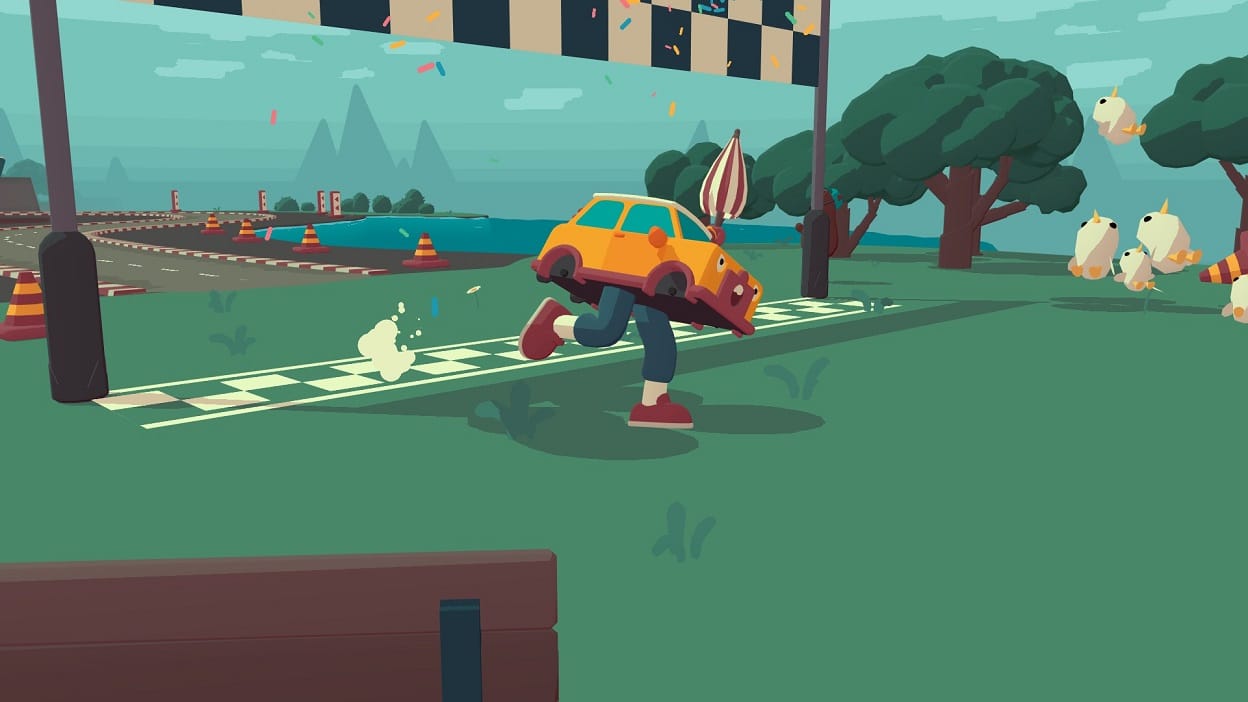
WHAT THE CAR?
You are a car that did the sensible thing and traded in its wheels for a pair of shiny new legs in the appropriately named WHAT THE CAR? This is an odd racing/platformer hybrid with physics elements that truly revels in absurdity.
WHAT THE CAR? is divided into a series of short levels, each of which sees the protagonist trying to cross a finish line in the shortest amount of time possible. The exact mechanics available to the player are constantly changing. Most levels allow the player to run and jump, but others have special rules, like restricting them to only jumping, letting the player glide or fly, offering the player some offensive move, or radically changing the car physics. These are intermingled with very simple minigames that have the player doing anything from jumping rope to making burgers.
The standard levels are pretty easygoing, but there are options for people who want more challenge. Both the overworld and the levels contain hidden collectibles, but anyone who really wants to test their skills can try out the skull levels which can be a humbling experience.
There are hundreds of normal levels in WHAT THE CAR? and that's just the beginning. The game also features a level designer and even integrates player-made levels right into the game world. I didn't have a chance to see any of these myself, but I have a feeling anyone who thinks the game is still too easy will find these levels a special challenge.
Overall, this is a game one plays just to see how weird it gets. In this regard, you will not be disappointed.
WHAT THE CAR? is available for PC via Steam and on Apple Arcade. A copy was provided for this review.
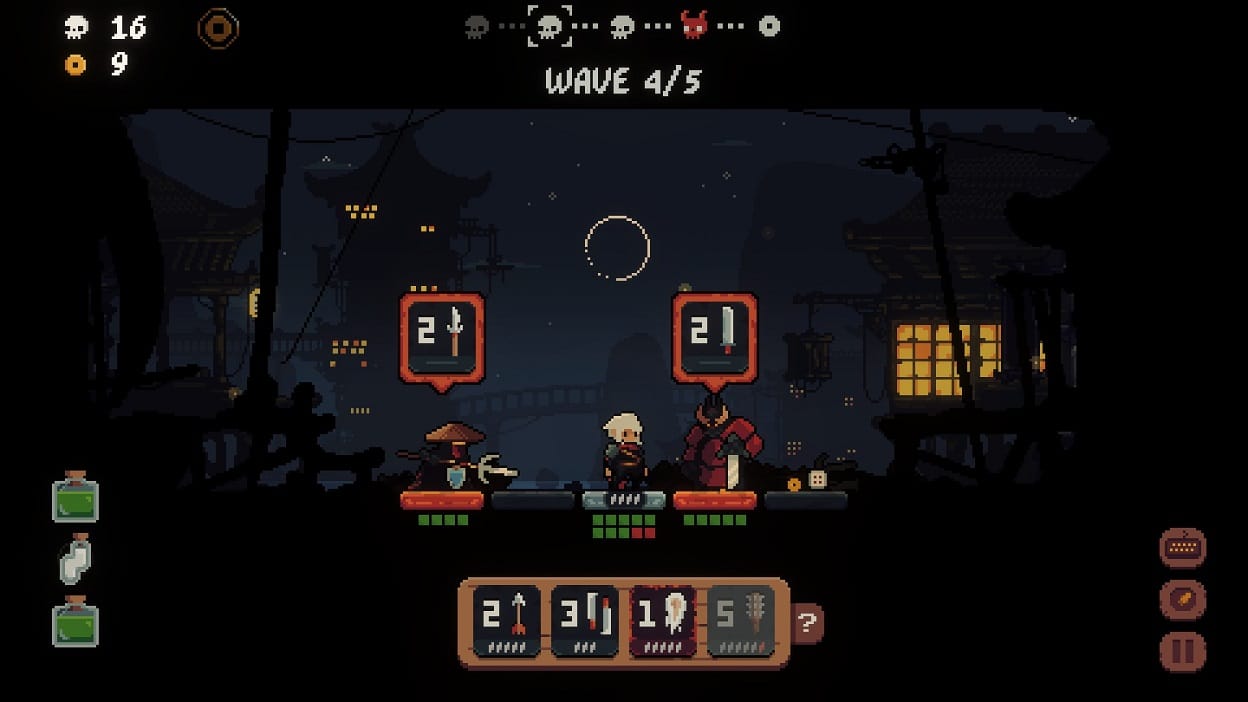
Shogun Showdown
Shogun Showdown is a roguelike deckbuilder with a literally one-dimensional twist. The player character and enemies are all on a single plane and can only move left or right. It's a way of complicating the game by simplifying the rules.
The gameplay is turn-based, with the player and enemies all acting simultaneously. Taking any action - stepping to a new tile, turning around, queueing up an attack card, and starting an attack combo - consumes a single turn, with the player having their actions resolved first. Each playable character also has a unique movement ability, such as the default character's ability to swap places with an adjacent enemy every few turns. These skills are critical, as there are otherwise few ways to dodge incoming attacks.
Avoiding damage is central to the strategy, and that's not an easy task. The player can earn new attacks or upgrade existing ones after fending off enough waves, but there are no defensive skills at all. Defeating all enemies before they can act is a viable strategy at first, but later waves become large and aggressive enough that forethought becomes necessary. When the simple act of turning around exposes the character to damage, planning ahead can mean the difference between losing half your life in one turn and escaping unscathed.
The difficulty of Shogun Showdown is a bit deceptive. The early stages are very easy and the game is generous enough with healing items that it's possible to spring back from even a grievous error. But as with any roguelike RPG, this safety net exists to help build strength for the endgame. Form a strategy with your skills or prepare yourself for failure when the training wheels come off.
Overall, Shogun Showdown is a respectable challenge for veterans of the style that's also accessible enough for new players.
Shogun Showdown is available for PC via Steam. A copy was provided for this review.
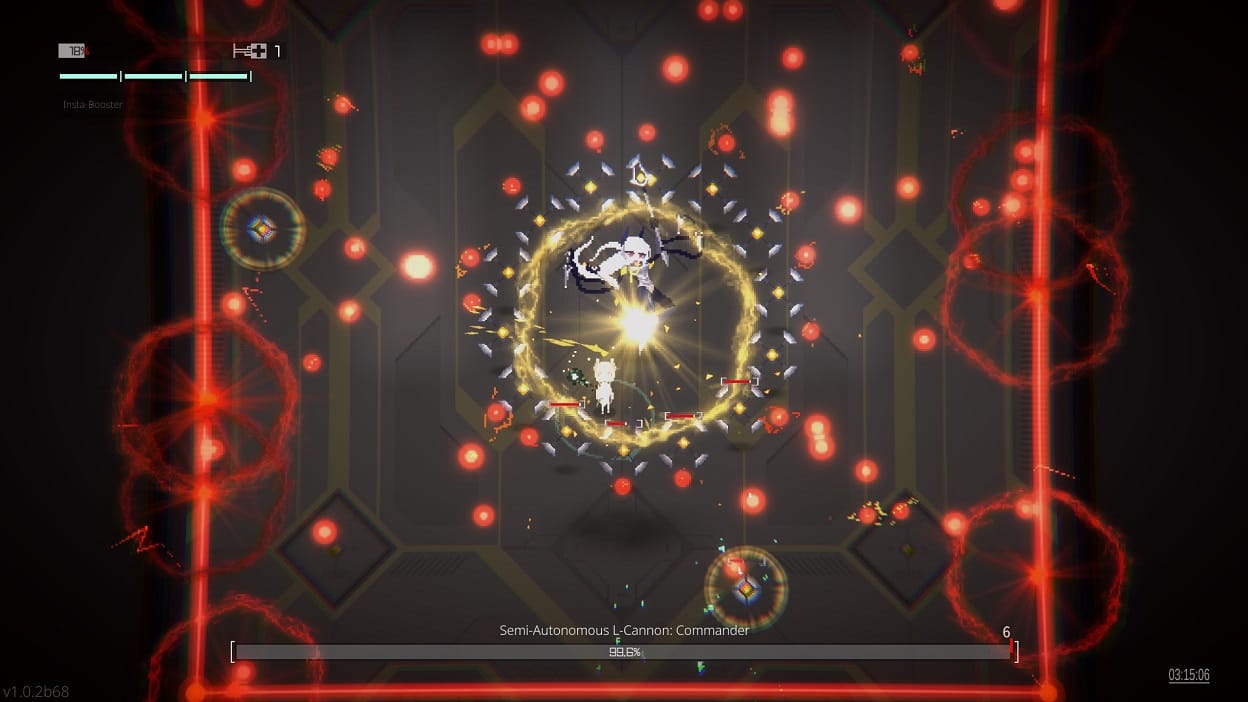
NanoApostle
A nameless young girl awakens within the bowels of a strange research facility. She isn't a normal child, but rather a cutting-edge science experiment with a biomechanical entity grafted into her body. This entity has turned her into a killing machine, which is exactly what the situation calls for as the only way out of the facility is through a series of prototype war machines. With some assistance from another lost experiment, she'll have to find a way to take them down while also finding the source of the foreign memories inside her head.
NanoApostle is a top-down, parry-based action game. It is chiefly a boss rush, though there are some more conventional side missions to unlock customization options. The bosses are the draw here, though - challenging, highly technical fights against a range of biomechanical horrors. The protagonist's basic kit includes a standard attack combo, ranged attack, dodge, and parry, along with a few more specializations unlocked throughout the story.
One of the key mechanics is the "Destruction Point" system. The protagonist does little damage with standard attacks, and the only way to win in a reasonable span of time is to exploit weaknesses that appear during certain enemy attacks or after sequential parries. Striking when a Destruction Point appears deals massive damage while also stunning the boss for follow-ups, but the weaknesses don't appear for long and may require a specific attack to hit them.
It's really the design that sets NanoApostle apart from similar games. The bosses can be truly intimidating and horrific, with some magnificently gory ends if the player manages to take one down. It can be worth fighting through the extremely demanding combat just to see what might come along next.
NanoApostle is available for PC via Steam and for Nintendo Switch. A copy was provided for this review.
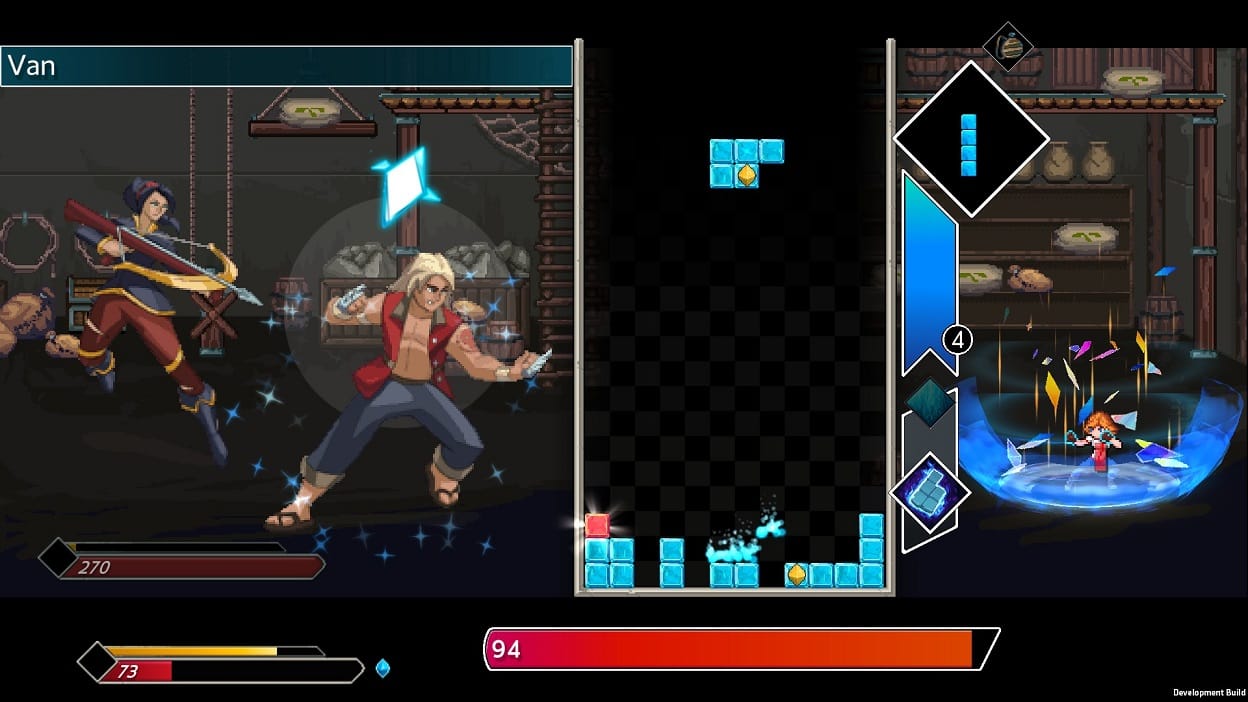
Flowstone Saga
The islands of Ocean's End are quiet, mellow little places that happen to sit atop ancient secrets. Local explorer Mirai stumbles into one of those secrets while collecting fruit, falling into a strange cavern and discovering an unusual artifact. Suddenly, Mirai has the power of "flow," an arcane gift that allows her to create and destroy. This gift is going to let Mirai raise Ocean's End to new heights of splendor, but it's also going to attract fresh trouble from across the seas.
Flowstone Saga is an RPG/puzzle hybrid, with the player clearing lines to deliver attacks and counter enemy moves. The core gameplay is going to remind you a lot of Tetris, in that it's built around rotating and dropping pieces to complete lines. The gameplay flow has a different feel, though. Most of the game's many combat mechanics favor quickly clearing lines over carefully setting up big plays and leaving gaps isn't necessarily a bad thing or even an error. An optional setting also makes it so that blocks only move downward manually, turning it into a true turn-based game.
As mentioned, there are a lot of mechanics in Flowstone Saga. These include a range of magical attacks, elemental attacks, a heat aura that increases damage with quick play, positive and negative effect blocks, and a range of upgradeable classes. Combat itself is very forgiving on all but the highest difficulty setting, so it's no crisis if the player doesn't master every mechanic.
There's also a lot going on outside of combat. The same puzzle mechanic is used for a number of non-combat mechanics and side quests, including mini-puzzles and resource gathering. The latter is used to upgrade and expand the main town, which is one of the game's core features. Watching the world grow is what keeps the game moving forward, as the plot, while passable, doesn't exactly stand out from other JRPGs.
A very easygoing game overall, it might not satisfy the serious RPG fan, but it's a good choice for someone looking for a more mellow experience.
Flowstone Saga is available for PC via Steam. A copy was provided for this review.
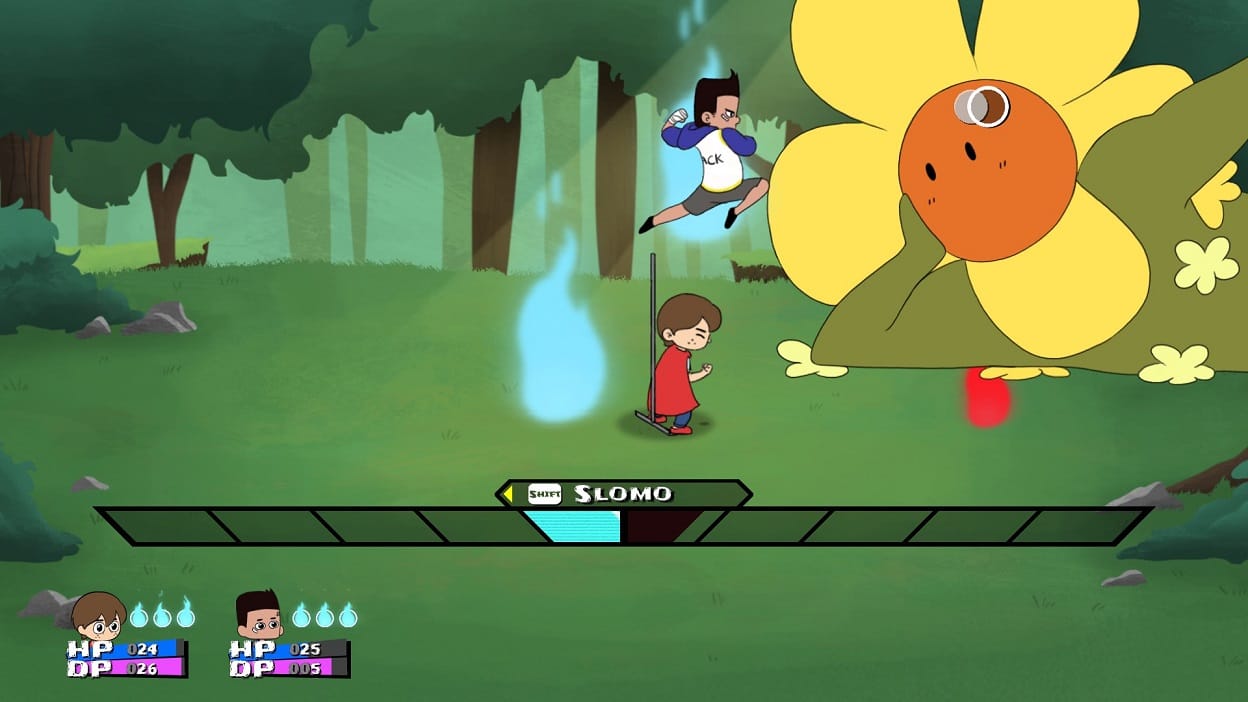
Cricket: Jae's Really Peculiar Game
Jae was always a sensitive boy, but the death of his mother sent him deep into his own head. He seldom leaves the house, and even then only when prodded into it by his friend or his older sister. One day, Jae has a chance encounter with a very strange girl who claims to be headed to Yimmelia, a mythical place on the Moon where wishes come true. Desperate to unmake the past, Jae heads out on a journey of his own, heedless of what he might have to sacrifice to achieve his goal.
Cricket is a timing-based RPG with some definite 16-bit inspiration. Combat is a pretty straightforward affair with one stand-out mechanic: the tide meter. Characters build up tide with regular attacks and can then use it to power up standard moves, execute team-based attacks, or slow down time making it easier to time parries and hits. It isn't the first game to use a mechanic like this, but it's the first one I've seen where the enemy side has the same meter. Take too long during a fight and you could see enemy team-up attacks coming your way.
Ample healing means that Cricket's combat is pretty easy, allowing the player to focus more on the story. At a top level, the game features an episodic plot that's pretty common to JRPGs. Where it stands out is in the more character-driven side of the story, which focuses on loss and grief. The two sides are, thematically speaking, night and day - one silly and absurdist, the other much heavier. That could have caused some friction, but there's decent harmony between them.
All in all, Cricket is an interesting little JRPG that gets bonus points for being a game inspired by Earthbound without being Yet Another Indie Earthbound-Like.
Cricket: Jae's Really Peculiar Game is available for PC via Steam and for Nintendo Switch. A copy was provided for this review.
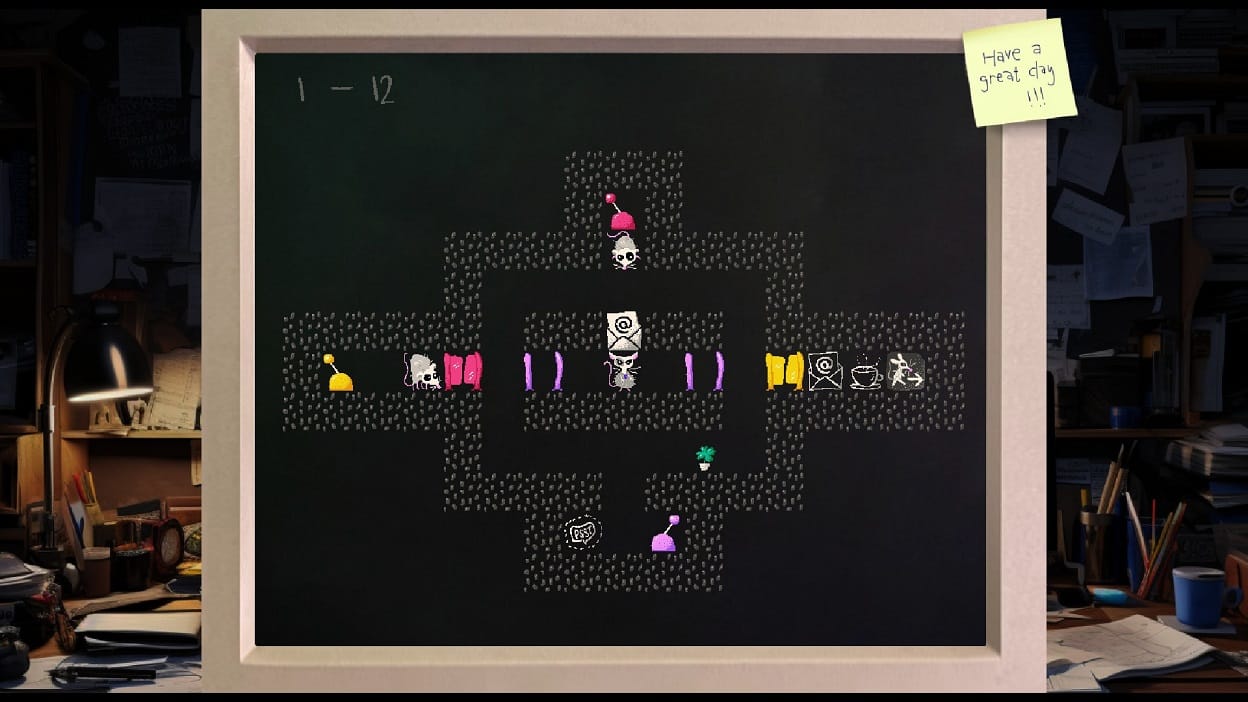
Rats in a Cage
Due to overwhelming interest in new openings, the Asura Corporation has had to phase out traditional interviews in favor of a computer-monitored test. The task is simple: run through a simulated version of the day-to-day work environment and prove your worth to the AI subroutine watching the test. At least, it would be simple if the computer didn't actively hate you.
Rats in a Cage is an old-school puzzle game with the core puzzles built around manipulating your colleagues. Each room contains one or more NPCs who react in predictable ways, and the objective is to use gates, pushable blocks, and attractive objects to maneuver them out of the way of the goal. As with any good puzzle game, it's a simple concept that gets complex in application, and the puzzles tend to make logical sense once they're shaken out.
As you might have guessed, there is an element of satire in Rats in a Cage. The narrator has nothing but disdain for you (the player) and will mock you, try to trick you or convince you to quit, mess with the UI, and even tinker with levels to make them harder. You'll also have to deal with the occasional executive intruding into the game world to force you to do something unpleasant. If this isn't to your liking and you'd prefer a pure puzzle experience, there is an option to turn most of it off, but it does take away part of the experience.
Black humor aside, Rats in a Cage is about what you'd expect from a conventional puzzle game. The puzzles make sense and there are several dozen of them, which should take a while to untangle.
Rats in a Cage is available for PC via Steam. A copy was provided for this review.
That wraps up our look at the plethora of games that caught our attention in September, be sure to come back each month for more indie games you want to look out for!
